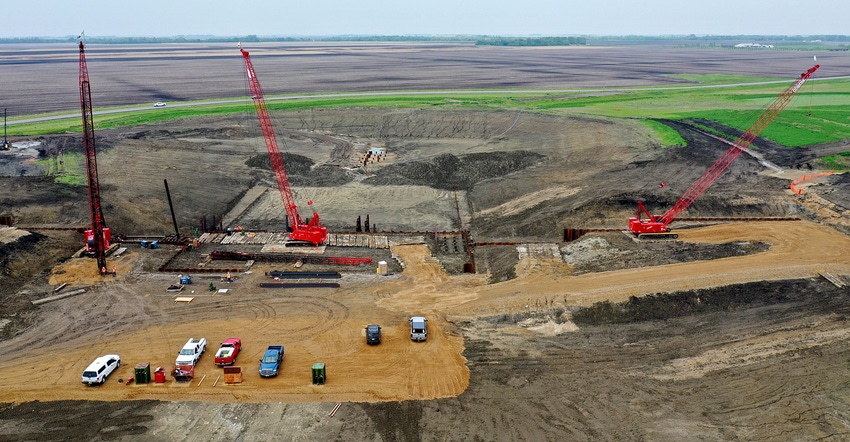June 12, 2020

The Fargo, N.D., based Metro Flood Diversion Authority announced June 2 that it has received approval of the Property Rights and Acquisition Mitigation Plan for the Fargo Moorhead Area Diversion Project from the North Dakota state engineer.
The mitigation plan guides how individuals impacted by the construction, operation or maintenance of the project are compensated and mitigated for their loss.
Authority executive director Joel Paulson says the approval was an important step in moving the project forward.
“The mitigation plan addresses conditions from the Minnesota Department of Natural Resources, the state of North Dakota and others that have been requested by communities and groups representing people impacted by the project,” Paulson says.
Funding to implement the programs described in the mitigation plan has been included in the project’s financial plan.
“We are doing our best to develop programs and policies to address project impacts, along with providing fair compensation to impacted people,” says Tim Mahoney, Fargo mayor and chairman of the Diversion Authority. “But we need to remember that the problem this project solves is flooding and that is important to all communities in the region.”
The mitigation plan is more than 180 pages long and outlines key actions and programs that the Diversion Authority is taking to meet federal, state and local requirements.
The plan identifies what constitutes making impact; how and when necessary property and easements will be purchased for the project; what the impacts are that require mitigation and how that mitigation is determined; how the upstream area is restored after the project operates; how public lands like roads are repaired after a flood event when the project operates; and options for homes, structures and cemeteries in the upstream mitigation area that would be impacted.
The mitigation plan also includes maps outlining the project and upstream mitigation area. The maps show the upstream mitigation area in four zones that have different levels of impact and mitigation requirements.
In total, there are approximately:
83 residential structures that require mitigation, including 60 in Cass County and 14 in Clay County. There are two residential structures in Richland County and seven in Wilkin County that require some form of mitigation.
564 non-residential structures that require mitigation. This includes commercial buildings, storage, barns, sheds and grain bins. Ninety-one percent, or 514, of these structures are in Cass and Clay counties.
Impacted residents and property owners will be mailed detailed letters with individualized maps outlining their impact and mitigation steps this summer. Any resident or property owner with more questions can email [email protected] or call 701-364-9111.
An informational overview on the project is available online.
Source: The Flood Diversion Authority, which is solely responsible for the information provided and is wholly owned by the source. Informa Business Media and all of its subsidiaries are not responsible for any of the content contained in this information asset.
Read more about:
FloodingYou May Also Like




